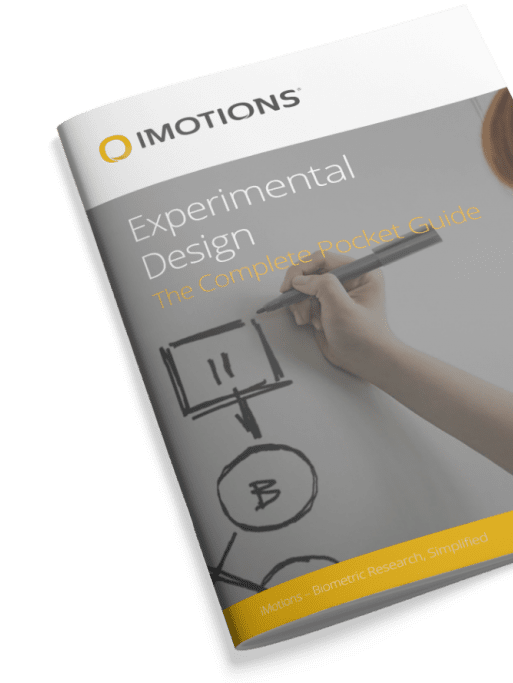Learn the distinctions between qualitative and quantitative research, their methodologies, and applications. This guide explores data collection techniques, analysis methods, and real-world examples to help you choose the right approach for your needs. Enhance your understanding of research fundamentals with practical insights and visual comparisons for effective decision-making.
Introduction
Research plays a vital role in understanding human behavior, uncovering patterns, and solving complex problems. Across diverse fields, researchers rely on two primary approaches: qualitative and quantitative research. Each method offers unique strengths and applications, helping researchers achieve their goals effectively.
In this comprehensive guide, we will break down the key distinctions between qualitative and quantitative research, explore their methodologies, discuss their benefits and limitations, and provide actionable insights to help you select the most suitable approach for your research needs.
Table of Contents
- Introduction
- Qualitative vs. Quantitative Research: Key Differences and Applications
- What is qualitative research and why is it important
- Challenges and Limitations of Qualitative Research
- What is Quantitative Research?
- Qualitative or Quantitative Research: How to Decide?
- Conclusion
- Free 44-page Experimental Design Guide
Qualitative vs. Quantitative Research: Key Differences and Applications
Qualitative vs. Quantitative Research: Key Differences and Applications
When embarking on a research project, one of the first challenges is determining whether to use a qualitative or quantitative approach. While their objectives often overlap, the methods, data types, and outcomes differ significantly.
- Qualitative Research generates descriptive, non-numerical data that explores experiences, thoughts, and perceptions.
- Quantitative Research produces numerical data, enabling statistical analysis and generalizations to larger populations.
Think of qualitative research as painting a picture with rich detail, while quantitative research is like analyzing numerical trends to predict outcomes. Both are essential tools, each suited to different scenarios.
What is qualitative research and why is it important
Qualitative research is ideal for exploratory studies, offering deep insights into specific phenomena. It is particularly useful in uncovering the “why” behind human behavior, enabling researchers to understand complex emotions, attitudes, and interactions.
Key qualitative methods include:
- Individual Interviews: In-depth conversations to uncover personal perspectives.
- Focus Groups: Group discussions to explore shared experiences.
- Behavioral Observations: Analyzing actions in natural settings.
These methods emphasize context, cultural nuances, and participant experiences, making qualitative research a powerful tool for exploring uncharted territory.
Most commonly applied Qualitative Methods:
- Individual interviews
- Group discussions
- Focus groups
- Behavioral observations

Check out: How to measure Human Behavior: Survey vs. Focus Groups vs. Biometric
In addition, eye tracking or automatic facial expressions can be collected and analyzed qualitatively, for example in usability research, where gaze patterns (such as with heatmaps) or moments of expressions of frustration/confusion can be used to track the journey of an individual respondent within a software interface.
Check out: What is Eye Tracking and How Does it Work?
Typically, qualitative research focuses on individual cases and their subjective impressions. This requires an iterative study design – data collection and research questions are adjusted according to what is learned.
Often, qualitative projects are done with few respondents and are supposed to provide insights into the setting of a problem, serving as a source of inspiration to generate hypotheses for subsequent quantitative projects.
Key Benefits of Qualitative Research
Qualitative research methods are the tool of choice when a researcher wants to gain in-depth data from a small sample size, such as a local community, closed demographic, or situations where in-depth data lets you extrapolate responses to a broader perspective. Some of the main strengths of qualitative research are;
- Benefits of Qualitative Research
- In-depth Understanding: Provides rich, detailed insights into complex issues.
- Flexibility: Adaptable to evolving research questions and themes.
- Contextual Focus: Captures social and cultural dynamics.
- Participant-Centric: Explores individual experiences and perspectives.
- Generates New Theories: Lays the groundwork for further quantitative studies.
Challenges and Limitations of Qualitative Research
While invaluable for exploring nuances, qualitative research has its challenges:
- Subjectivity: Heavily reliant on researcher interpretation, increasing bias risks.
- Limited Generalizability: Findings may not apply to broader populations.
- Time-Consuming: Data collection and analysis require significant effort.
- Lack of Standardization: Difficult to replicate and compare studies.
What is Quantitative Research?
What is quantitative research and how to measure it
Quantitative research focuses on measurable variables, enabling statistical analysis and broader applicability. It is particularly effective for testing hypotheses and identifying patterns across large data sets.
Methods of quantitative research include:
- Biometric Techniques (e.g., eye tracking, facial expression analysis)
- Surveys and Questionnaires
- Structured Interviews
- Behavioral Coding and Observations
Check out: How To Do Behavioral Coding in iMotions
Key Benefits of Quantitative Research
As should be apparent by now, quantitative research should be your method of choice if you are looking to work with a large amount of data. Spotting trends, fluctuations across demographics, and objective generalizations in responses is where the quantitative research methods shine. Here is a list of the best reasons why you should choose quantitative research as your method.
- Objectivity: Relies on numerical data and statistical techniques, reducing bias.
- Generalizability: Results can often be extrapolated to larger populations.
- Replication: Standardized methods ensure consistency across studies.
- Efficiency: Statistical tools simplify data analysis, highlighting trends quickly.
Challenges and Limitations of Quantitative Research
Research and data collection methods focused on quantity rather than quality, will inevitably come with certain drawbacks and limitations. These are dependent on the research scope, but at the very least they should be considered when building a study design. Following here is a list of the main limitations or considerations of using quantitative research as a method.
- Lack of Context: Often misses the “why” behind behaviors or trends.
- Limited Scope: Focuses on predefined variables, potentially overlooking nuances.
- Difficulty in Measuring Complex Constructs: Emotions, attitudes, and beliefs can be challenging to quantify.
Effective Techniques for Quantitative Research
Quantitative techniques typically comprise various forms of questionnaires and surveys, structured interviews as well as a behavioral observation based on explicit coding and categorization schemes.

In addition to these traditional techniques, biosensor recordings such as eye tracking, EEG, EDA / GSR, EMG, and ECG, as well as computer-guided automatic facial expression analysis procedures, are used.
Check out: What Is Facial Expression Analysis? (And How Does It Work?)
All of these quantify the behavioral processes in such a way that numerical results can be obtained – for example, fixation duration from eye tracking (representing the amount of visual attention), the number of GSR peaks (indicating the amount of physiological arousal) or the power of a specific EEG band.
After data collection, quantitative analysis techniques and statistics can be applied, such as t-tests and ANOVAs, to non-parametric methods. This often necessitates much bigger sample sizes compared to qualitative research but allows you to make more solid conclusions, that are backed up with data.
Check Out: How to perform a qualitative research interview
Qualitative or Quantitative Research: How to Decide?
Choosing between qualitative and quantitative research depends on the unique requirements of your study. Base your decision on the nature of your project, the type of information needed, and the resources at your disposal.
- A Mixed-Methods Approach combines both, offering a balanced perspective with depth and objectivity.
- Qualitative Research provides a deep understanding of complex research problems and can help refine or explore hypotheses.
- Quantitative Research enables you to analyze larger data sets, ensuring reliability and validity in your findings.
Ensuring Accurate Measurements and Avoiding Bias
Reliable research hinges on three key criteria:
- Objectivity: Ensure results are unaffected by personal biases or external influences.
- Reliability: Consistently reproduce results under similar conditions.
- Validity: Confirm that your methods accurately measure the intended variables.
By prioritizing these principles, researchers can produce trustworthy and actionable findings.
Conclusion
Qualitative and quantitative research methods are not competitors but complementary tools in the researcher’s toolkit. Understanding their distinctions, strengths, and limitations is crucial for choosing the right approach for your study. Whether you’re exploring intricate human experiences or analyzing large-scale trends, these methodologies enable you to uncover valuable insights and make informed decisions.
Elevate your research with a strategic, methodical approach tailored to your unique objectives.
If you would like to learn more about qualitative and quantitative research designs, contact our experts at iMotions. We’re happy to help!
Free 44-page Experimental Design Guide
For Beginners and Intermediates
- Introduction to experimental methods
- Respondent management with groups and populations
- How to set up stimulus selection and arrangement

Psychology Research with iMotions
The world’s leading human behavior software















